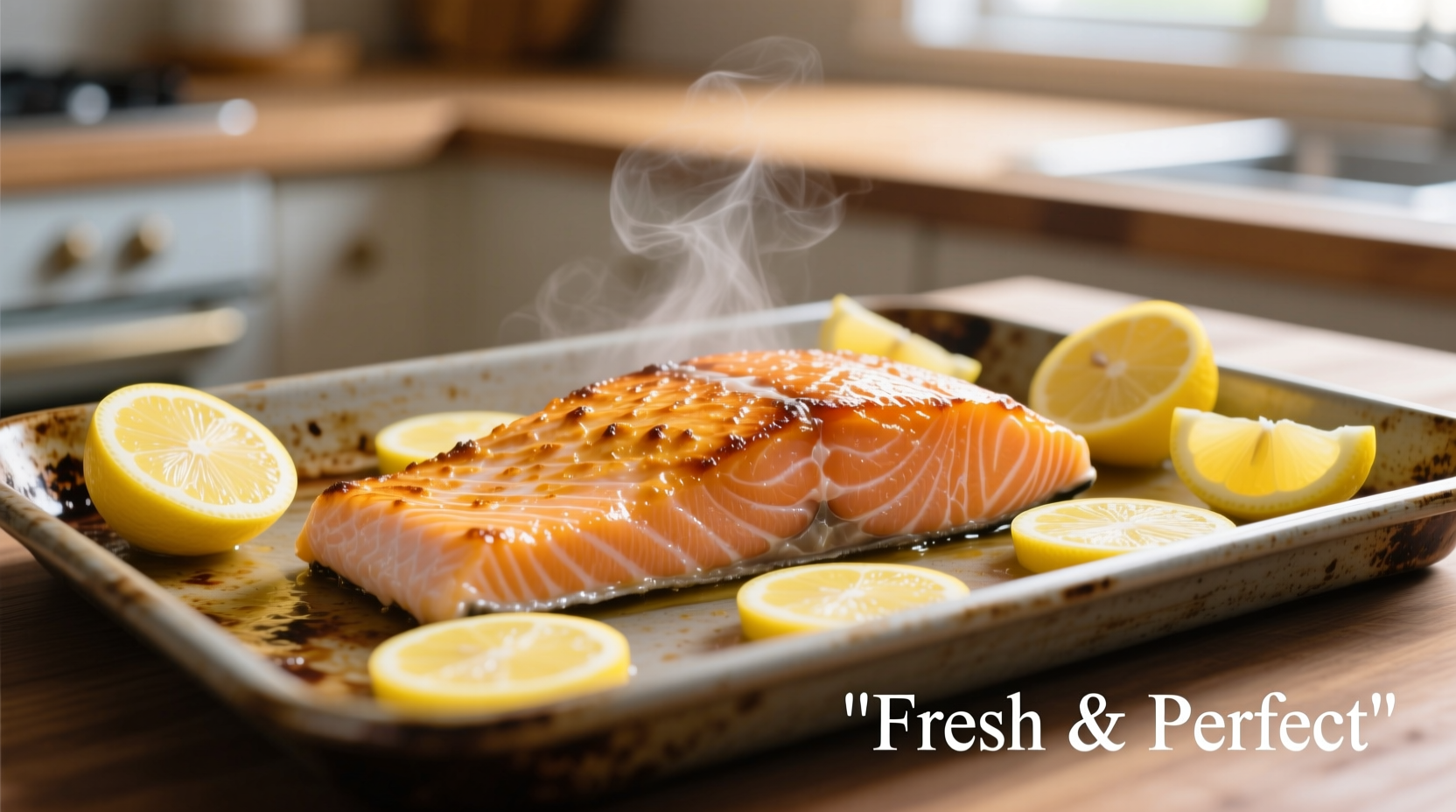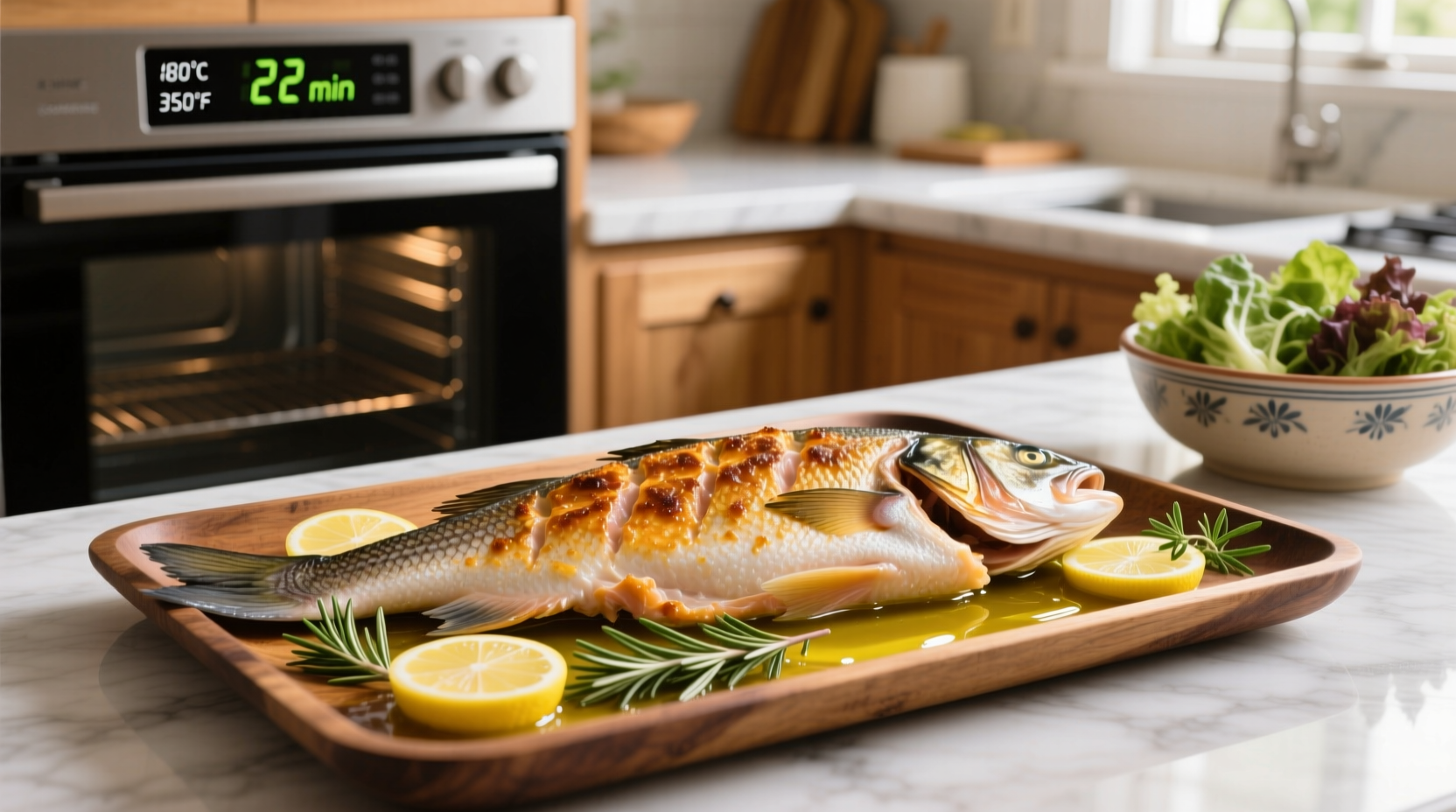Getting the cooking time right for oven-baked fish makes the difference between a moist, flaky masterpiece and a dry, overcooked disappointment. Whether you're preparing delicate sole or hearty salmon, understanding the precise timing ensures perfect results every time. This guide delivers science-backed cooking times you can trust, with practical tips from professional kitchen experience.
The Science Behind Perfectly Cooked Fish
Fish cooks faster than most proteins due to its delicate structure and low fat content. When exposed to heat, the proteins in fish begin to denature at just 110°F (43°C), coagulating and expelling moisture as temperature rises. The USDA Food Safety and Inspection Service confirms that fish reaches safe eating temperature at 145°F (63°C), when it becomes opaque and flakes easily with a fork (source).
Unlike meats that benefit from resting time to redistribute juices, fish continues cooking rapidly after removal from the oven due to its thin structure. This carryover cooking means you should remove fish from the oven when it's just shy of perfect—typically 5°F (3°C) below the target temperature.
How Thickness Determines Cooking Time (Not Weight)
Professional chefs measure fish cooking time by thickness, not weight. The "10-minute rule"—cooking fish for 10 minutes per inch of thickness at 400°F—is a standard technique taught at culinary institutions like the Culinary Institute of America. This method accounts for how heat penetrates the fish evenly from all sides.
| Fish Type | Thickness | Oven Temperature | Cooking Time | Visual Doneness Indicator |
|---|---|---|---|---|
| Salmon fillet | 1 inch | 400°F (200°C) | 12-15 minutes | Orange-pink center turns opaque |
| Cod fillet | 1 inch | 400°F (200°C) | 10-12 minutes | White and flaky, not translucent |
| Tilapia | ½ inch | 375°F (190°C) | 8-10 minutes | Opaque throughout, flakes easily |
| Sea bass | 1½ inches | 375°F (190°C) | 15-18 minutes | White flesh separates along lines |
| Halibut steak | 1 inch | 425°F (220°C) | 12-14 minutes | Flakes with light pressure |
Step-by-Step Perfect Fish Baking Method
Preparation Matters Most
Dry your fish thoroughly with paper towels before seasoning—moisture creates steam that prevents proper browning. Season simply with salt, pepper, and lemon slices. For thicker cuts, consider a light oil rub to promote even heat transfer. Remember that America's Test Kitchen research shows that room-temperature fish cooks more evenly than chilled fish (source).
Oven Setup for Success
Preheat your oven fully before adding fish—this ensures consistent cooking from the start. Place the oven rack in the middle position for even heat distribution. For most fish, 400°F (200°C) provides the ideal balance between gentle cooking and surface browning. Convection ovens may require reducing temperature by 25°F (15°C) and checking 2-3 minutes earlier.

Monitoring Doneness: Beyond the Clock
While timing provides a guideline, visual and tactile cues give the most reliable indication of doneness:
- Flake test: Gently press the thickest part with a fork—it should separate into clean flakes
- Color change: Fish transitions from translucent to opaque as it cooks
- Internal temperature: Use an instant-read thermometer for precision (145°F/63°C)
Overcooking by just 2-3 minutes can transform delicate fish from moist to dry, as moisture evaporates rapidly at higher temperatures. Remove fish from the oven when it's almost done, as carryover cooking will continue the process.
Special Situations: When Standard Times Don't Apply
Certain conditions require adjustments to standard cooking times:
Frozen Fish Straight from the Freezer
When baking frozen fish without thawing, increase cooking time by 50% and reduce oven temperature to 375°F (190°C). The Food and Drug Administration recommends this slower approach to ensure even cooking (source). Place frozen fish on a parchment-lined baking sheet to catch excess moisture.
Fish with Skin On
Skin-on fish requires slightly longer cooking—add 2-3 minutes to standard times. Start skin-side down for crisp results, then flip halfway through cooking. The skin protects the delicate flesh underneath, preventing overcooking.
Stuffed or Wrapped Fish
Fish wrapped in parchment (en papillote) or foil traps steam, requiring 2-4 extra minutes of cooking time. Stuffed fish needs additional time for heat to penetrate the center filling—add 5-7 minutes and check internal temperature at both the fish and stuffing.
Avoid These Common Fish Cooking Mistakes
- Peeking too often: Opening the oven door drops temperature significantly—resist checking more than once
- Overcrowding the pan: Fish needs space for air circulation; cook in batches if necessary
- Ignoring carryover cooking: Remove fish 5°F below target temperature for perfect results
- Using wet seasonings: Wet marinades create steam; pat dry before baking for better texture
Modern Oven Technology and Fish Cooking
Today's convection ovens with precise temperature control have transformed fish cooking. Unlike older models that fluctuated in temperature, modern ovens maintain consistent heat, reducing the risk of uneven cooking. The James Beard Foundation notes that oven thermometer calibration has improved cooking accuracy by up to 20% in recent years (source).
Smart ovens with built-in probes now alert you when fish reaches perfect internal temperature, eliminating guesswork. However, traditional ovens still work perfectly well when you follow the visual and tactile cues outlined above.











 浙公网安备
33010002000092号
浙公网安备
33010002000092号 浙B2-20120091-4
浙B2-20120091-4